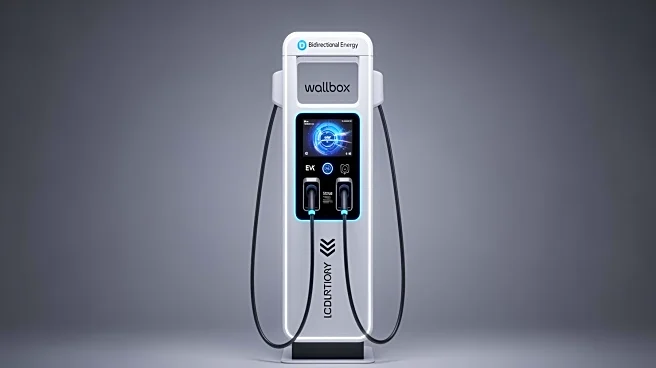What's Happening?
Bidirectional Energy and Wallbox have initiated North America's first multi-state bidirectional charging program, targeting 180 households in California and Connecticut. This pilot program is designed
for Kia EV9 owners, utilizing Wallbox's Quasar 2 bidirectional charger and Bidirectional Energy's virtual power plant platform to enable vehicle-to-grid functionality. The program offers significant incentives, with up to $8,800 available for charger and installation costs in California and up to $10,800 in Connecticut. Participants can also expect annual energy bill savings and grid support earnings of up to $1,500 in California and $1,350 in Connecticut. The initiative aims to simplify the process for drivers to maximize the value of their electric vehicles while supporting the grid.
Why It's Important?
This program represents a significant advancement in the integration of electric vehicles into the energy grid, potentially transforming how energy is managed at home. By enabling bidirectional charging, EV owners can turn their vehicles into energy assets, contributing to a more resilient grid and earning money in the process. This initiative could lead to broader adoption of electric vehicles and bidirectional charging technology, promoting energy efficiency and sustainability. It also highlights the growing collaboration between technology providers and utilities to enhance grid stability and support renewable energy integration.
What's Next?
The pilot program is set to expand to additional vehicles and households, with homeowners required to verify their eligibility through the Bidirectional Energy website. Participants must own or lease a Kia EV9 and meet specific residence and utility requirements. The program's success could lead to wider implementation across the U.S., encouraging more consumers to adopt electric vehicles and participate in grid-support programs. As the technology scales, it may drive further innovation in energy management and support the transition to a more sustainable energy ecosystem.
Beyond the Headlines
The bidirectional charging initiative could have long-term implications for energy policy and consumer behavior. By demonstrating the viability of vehicle-to-grid technology, it may influence regulatory frameworks and encourage investment in smart grid infrastructure. Additionally, the program's focus on priority populations could address energy equity issues, ensuring that diverse communities benefit from technological advancements. This development may also spur further research into optimizing energy storage and distribution, contributing to the broader goals of reducing carbon emissions and enhancing energy security.












